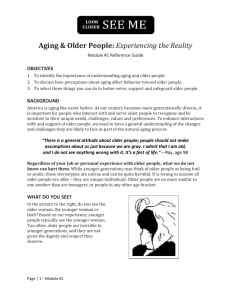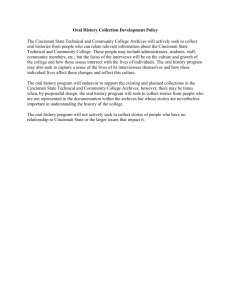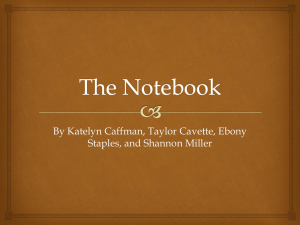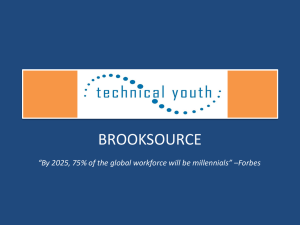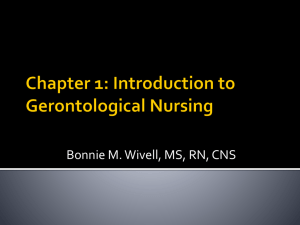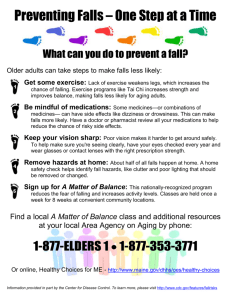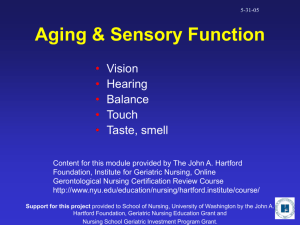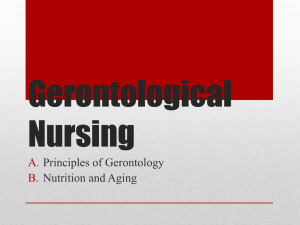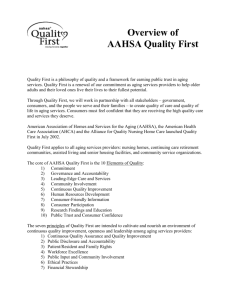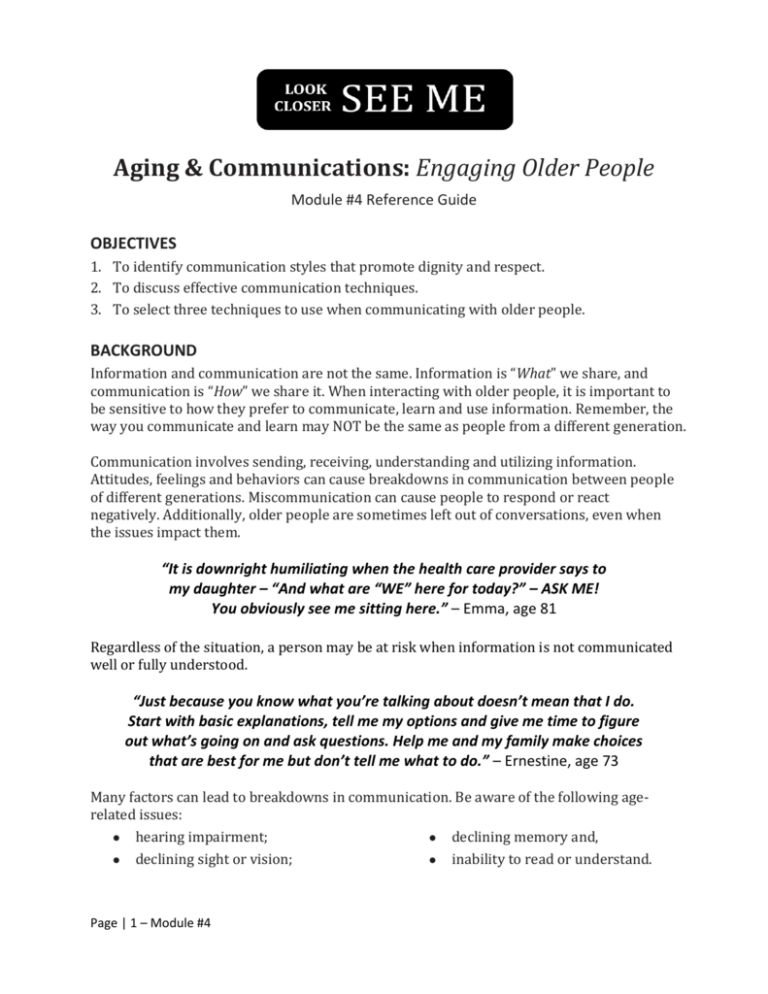
Aging & Communications: Engaging Older People
Module #4 Reference Guide
OBJECTIVES
1. To identify communication styles that promote dignity and respect.
2. To discuss effective communication techniques.
3. To select three techniques to use when communicating with older people.
BACKGROUND
Information and communication are not the same. Information is “What” we share, and
communication is “How” we share it. When interacting with older people, it is important to
be sensitive to how they prefer to communicate, learn and use information. Remember, the
way you communicate and learn may NOT be the same as people from a different generation.
Communication involves sending, receiving, understanding and utilizing information.
Attitudes, feelings and behaviors can cause breakdowns in communication between people
of different generations. Miscommunication can cause people to respond or react
negatively. Additionally, older people are sometimes left out of conversations, even when
the issues impact them.
“It is downright humiliating when the health care provider says to
my daughter – “And what are “WE” here for today?” – ASK ME!
You obviously see me sitting here.” – Emma, age 81
Regardless of the situation, a person may be at risk when information is not communicated
well or fully understood.
“Just because you know what you’re talking about doesn’t mean that I do.
Start with basic explanations, tell me my options and give me time to figure
out what’s going on and ask questions. Help me and my family make choices
that are best for me but don’t tell me what to do.” – Ernestine, age 73
Many factors can lead to breakdowns in communication. Be aware of the following agerelated issues:
hearing impairment;
declining memory and,
declining sight or vision;
inability to read or understand.
Page | 1 – Module #4
Other issues include:
the type of information being shared,
understanding of an issue or topic,
the environment, and
personal style, such as use of body language, tone of voice, choice of words, speaking
pace and more.
How do YOU interact with older people? Do you tend to “Talk WITH”
and involve older people or “Talk TO” them? Many younger people talk TO
them, telling older people things and not really caring what they have to
say. Listening is a major part of communication.
Three elements of effective communication are:
1. ACKNOWLEDGEMENT. To acknowledge is “to take notice of or reply to.” Sadly,
many older people are not acknowledged when they need to be. Instead, they are
overlooked, avoided and talked down to.
2. PARTICIPATION. To participate is “to have a part or share in.” In addition to the factors
listed above, we need to be aware of issues that could affect a person’s ability to
participate in a conversation. Language and cultural backgrounds can present
challenges. Imagine if your primary language doesn’t match that of the person you are
talking with and how disconnected you might feel.
3. ENGAGEMENT. To engage is “to interest or involve.” We need to speak in a way that
encourages involvement and engages the older person in conversation. Be aware of
your tone and choose your words carefully. If a person feels threatened, embarrassed or
offended, they may shut down.
“Skip the comments like “Hi Sweetie”. You don’t know me so let’s not get too friendly.
If you see that I have gray hair and wrinkles don’t treat me like I am a child.
I am a capable adult who is filled with wisdom and has been around
the block more times than you.” – Shirley, age 76
Older people are individuals with their own unique personalities. Some are quiet and
easygoing, while others are loud and assertive. Some listen and nod; others express
concerns and ask a lot of questions. As a result, do not expect all older people to act or
respond the same way.
People also have different learning styles. Many older people are visual learners, meaning
they need to see or read something to understand and utilize it. Some are auditory learners,
meaning they learn by listening or hearing. Others are kinesthetic learners meaning they
prefer hands-on learning where they are taking notes or being shown how to do something.
The following sums up the important information in this module:
Page | 2 – Module #4
SAGE ADVICE
S is for SIMPLIFY. Instead of technical or medical terms, use simple words that older
people are likely to be familiar with and understand.
A is for ASSURE. Don’t assume all older people are deaf, dumb or blind. Assure them they
matter by communicating with kindness and involving them in the conversation.
G is for GIVE information. Help older people make informed decisions by sharing
information in the way they prefer. Writing or demonstrating something can be helpful.
E is for EASE into it. Avoid sharing too much, too quick. Unfamiliar situations can be
overwhelming, so slow down and allow people time to process the information.
A is for ACKNOWLEDGE. Instead of overlooking older people, recognize, engage and listen
to them.
D is for DISCOVERY. Just because someone nods their head doesn’t mean they understand
you. Ask older people questions to see if they truly comprehend.
V is for VALUE. Avoid using overly friendly terms and baby talk. Instead, respect older
people by using their proper name such as Mr. Smith.
I is for INDIVIDUALIZE. Acknowledge language barriers and be sensitive to one’s values,
cultural beliefs and changes associated with natural aging.
C is for COMMUNICATE. Avoid telling people what to do. Instead, focus on what is most
important for them to know and consider. Make sure they understand what is required of
them.
E is for EMPATHIZE: Try to understand a situation from the older person’s
perspective. Watch for feedback and cues to guide communication and information
sharing. Be sensitive to the situation, potential challenges and needs.
KEY POINTS TO REMEMBER
Consider the following as you interact with older people:
1. Older people need and are entitled to be recognized when matters involve them.
Even if a person has dementia or memory loss, direct your comments and attention
to him or her.
2. You can interact more effectively by understanding how aging changes can impact
communication.
3. We must communicate respectfully with older people and provide the right
information the right way to help them make informed decisions.
Page | 3 – Module #4
COPYRIGHT © 2011. University of Cincinnati, Ohio. All rights reserved. Duplication and distribution
without written permission is strictly prohibited. The Generational Diversity and Sensitivity Training was
developed by Charles Puchta and Evelyn Fitzwater of the Center for Aging with Dignity at the University
of Cincinnati College of Nursing. Special thanks to our collaborators from Cincinnati Area Senior Services,
the Council on Aging of Southwest Ohio, The Mayerson Jewish Community Center, and Warren County
Community Services, Inc.
The LOOK CLOSER, SEE ME Generational Diversity and Sensitivity training program
(www.LookCloserSeeMe.org) was made possible by a grant from an anonymous foundation and the
financial support of Marjorie Motch, an active 87-year-old member of the University of Cincinnati
College of Nursing Board of Advisors. Thank you to the many older people and representatives from
various cultural communities who actively participated in this project by reviewing the training materials
and sharing their thoughts, opinions and comments. Thanks also to Arlene de Silva for sharing her
cultural perspective and photos from her book Faces in Aging - www.FacesInAging.org.
FOR MORE INFORMATION
Center for Aging with Dignity
– (513) 558-2428 | www.SafeAfter60.org
Page | 4 – Module #4
University of Cincinnati College of Nursing
– (513) 558-5500 | www.Nursing.UC.edu

